Wadjet – Egyptian Goddess Protected Pharaohs And Was Depicted As A Cobra-Uraeus
Angela Sutherland - AncientPages.com - In Egyptian mythology, Wadjet is a goddess depicted as a cobra and worshiped in Lower Egypt. Wadjet was represented as a cobra-uraeus.
 Wadjet illustration from Pantheon égyptien by Leon Jean Joseph Dubois. Image credit: Rawpixel -CC BY-SA 4.0
Wadjet illustration from Pantheon égyptien by Leon Jean Joseph Dubois. Image credit: Rawpixel -CC BY-SA 4.0
The Uraeus ("rearing cobra"), in the upright form of an Egyptian cobra, symbolized sovereignty, royalty, deity, and divine authority in ancient Egypt and is closely associated with the goddess Wadjet.
She protected the Egyptian pharaohs, and the Uraeus (the image of Wadjet with the solar disk) was displayed upon the pharaoh's head and was a part of the pharaoh's crown.
It symbolically protected the pharaoh's power in this earthly realm and the heavenly abode. The pharaoh was recognized only by wearing the Uraeus. This tradition is ancient and goes back to the Old Kingdom during the third millennium BC. Several goddesses associated with or considered aspects of Wadjet are also depicted wearing the Uraeus.
According to Greek historical sources, her temple and the oracle were located in Per-Wadjet, later known as Buto, officially Wadjet's cult center.
 Nefertum on a lotus flower is depicted between the Ladies of the Two Lands - Wadjet and Nekhbet. Temple of Dendera, Roman period. Image credit: Olaf Tausch - CC BY 3.0
Nefertum on a lotus flower is depicted between the Ladies of the Two Lands - Wadjet and Nekhbet. Temple of Dendera, Roman period. Image credit: Olaf Tausch - CC BY 3.0
Wadjet was associated with the Nile Delta region from a very early time. In Egypt's pre-Dynastic period, Wadjet was the guardian of all of Lower Egypt, while her counterpart, the vulture goddess Nekhbet, played a similar role in Upper Egypt. So, a real connection existed between a serpent-headed Wadjet and Nekhbet, the vulture goddess in Upper Egypt. This connection was also clearly seen.
At the time of the unification of Upper and Lower Egypt, Nekhbet joined the image of Wadjet on the Uraeus that would encircle the crown of the pharaohs who ruled unified Egypt. The double crown of the rulers of Egypt was known as pschent, the "Two Powerful Ones."
Wadjet was depicted as an attacking cobra, which could symbolize the divine care of the pharaoh, who was seen as the gods' representative on Earth and one of the gods. He played a crucial role in the Egyptian cult. As a god and the personification of Egypt, he possessed more power than any other monarch recorded in human history.
However, he was a strong ruler, a high priest, a lawmaker, and a battle commander. The pharaoh was both a political and a religious leader.
Due to his unique position, the pharaoh needed Wadjet, a protector.
It was believed that she provided him with power and authority. Therefore, her images were placed on royal crowns, showing her close association with the ruler.
Image of Wadjet at Deir el-Bahri Temple. Image credit: I, Rémih - CC BY-SA 3.0
The pharaohs wore the Uraeus as a head ornament, either with the body of Wadjet atop his head or as a crown encircling his head.
This decoration symbolized the goddess's protection of the ruler and supported his right over the land.
Wadjet is not a goddess mentioned often in the "Pyramid Texts" because she, first and foremost, is linked with the world of the living. Her name "Wadjet" means "the green one," which is most probably related to the natural color of the serpent or the color of the papyrus (plant-symbol of Lower Egypt).
Wadjet – The "Mistress Of Fear"
Why was the goddess known as the "Mistress of Fear" or the "Mistress of Awe?
According to Egyptian mythology, the royal serpent spat terrible flames in defense of the king, and military inscriptions of Ramesses II (those related to the great Battle of Kadesh) describe Wadjet, who, with her fiery breath, mercilessly killed the pharaoh's enemies.
For Ramesses II, this battle (fought against the Hittites) was his reign's most significant historical event. He led his smaller force of 20,000 men against the larger Hittite army of 50,000 men.
In some other myths, as linked with several leonine goddesses, Wadjet is referred to as the famous "Eye of Ra." In addition, we remember Wadjet as a possible mother of Nefertum, and was highly regarded as a caregiver for women giving birth.
Amulets of the goddess Wadjet were popular during the Saite Period (724-712 BC). Her shrine was known as the "house of flame" and attested to pre-dynastic times. Interestingly, although related to the living world, Wadjet was often included in funerary decorations of the ancient Egyptians, so one can say this goddess was a revered deity.
Updated on September 7, 2024
Written by – A. Sutherland - AncientPages.com Senior Staff Writer
Copyright © AncientPages.com All rights reserved. This material may not be published, broadcast, rewritten or redistributed in whole or part without the express written permission of AncientPages.com
Expand for referencesMore From Ancient Pages
-
 Unknown Purpose Of The Mysterious Huge Iron Age Ceramic Sharjah Jar Puzzles Scientists
Archaeology | Oct 7, 2022
Unknown Purpose Of The Mysterious Huge Iron Age Ceramic Sharjah Jar Puzzles Scientists
Archaeology | Oct 7, 2022 -
 Discovery At Fujiwarakyu Palace Complex Offers Better Glimpse Of 7th-Century Japan
Archaeology | Oct 21, 2015
Discovery At Fujiwarakyu Palace Complex Offers Better Glimpse Of 7th-Century Japan
Archaeology | Oct 21, 2015 -
 The Hitra Man Lived In A Turbulent Time – Was He A Stone Age Warrior?
Archaeology | May 10, 2024
The Hitra Man Lived In A Turbulent Time – Was He A Stone Age Warrior?
Archaeology | May 10, 2024 -
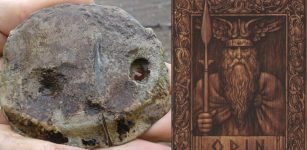 Unusual Object With Crosses And Enigmatic Runes Discovered In Sweden
Archaeology | May 16, 2018
Unusual Object With Crosses And Enigmatic Runes Discovered In Sweden
Archaeology | May 16, 2018 -
 Easter Island’s Statues Reveal Bodies Covered With Unknown Ancient Petroglyphs
Archaeology | Jan 21, 2014
Easter Island’s Statues Reveal Bodies Covered With Unknown Ancient Petroglyphs
Archaeology | Jan 21, 2014 -
 On This Day In History: Battle of Champion Hill Was Crucial Action Of Grant’s Vicksburg Campaign – On May 16, 1863
News | May 16, 2016
On This Day In History: Battle of Champion Hill Was Crucial Action Of Grant’s Vicksburg Campaign – On May 16, 1863
News | May 16, 2016 -
 Secrets Of The Uruk Prophecy Found In The Ancient Library Of A Magician With Divine Powers
Featured Stories | Mar 18, 2025
Secrets Of The Uruk Prophecy Found In The Ancient Library Of A Magician With Divine Powers
Featured Stories | Mar 18, 2025 -
 How Did Mesopotamia Change The World?
Civilizations | Jan 18, 2020
How Did Mesopotamia Change The World?
Civilizations | Jan 18, 2020 -
 Clovis People Invented ‘Fluting’ Ancient Stone Weaponry
Archaeology | Apr 5, 2017
Clovis People Invented ‘Fluting’ Ancient Stone Weaponry
Archaeology | Apr 5, 2017 -
 Ancient Tomb Of ‘Bird Oracle Markos’ Unearthed In Bergama (Pergamon), Turkey
Archaeology | Sep 6, 2022
Ancient Tomb Of ‘Bird Oracle Markos’ Unearthed In Bergama (Pergamon), Turkey
Archaeology | Sep 6, 2022 -
 King Charles II Of England Banned Coffeehouses In 1675
Ancient History Facts | Jun 18, 2018
King Charles II Of England Banned Coffeehouses In 1675
Ancient History Facts | Jun 18, 2018 -
 Proteus: Prophetic Greek Sea God Who Knew All Things, Past, Present And Future
Featured Stories | Jan 17, 2020
Proteus: Prophetic Greek Sea God Who Knew All Things, Past, Present And Future
Featured Stories | Jan 17, 2020 -
 Did The 8 Omens Of The Aztecs Foretell The End Of Their Civilization?
Civilizations | Jan 30, 2020
Did The 8 Omens Of The Aztecs Foretell The End Of Their Civilization?
Civilizations | Jan 30, 2020 -
 Secrets Of Quipu – Ancient Inca Message Decoded By Student
Archaeology | Dec 27, 2017
Secrets Of Quipu – Ancient Inca Message Decoded By Student
Archaeology | Dec 27, 2017 -
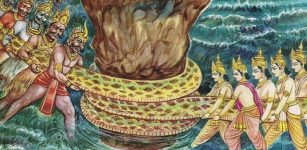 Churning Of The Ocean: Great Hindu Story Of Creation From Mahabharata And Purana
Featured Stories | Jun 16, 2018
Churning Of The Ocean: Great Hindu Story Of Creation From Mahabharata And Purana
Featured Stories | Jun 16, 2018 -
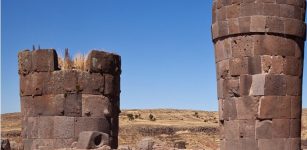 Huge, Cylindrical Pre-Incan Chullpas Of Sillustani, Peru Were Used As Graves For Colla Nobles
Civilizations | Mar 14, 2023
Huge, Cylindrical Pre-Incan Chullpas Of Sillustani, Peru Were Used As Graves For Colla Nobles
Civilizations | Mar 14, 2023 -
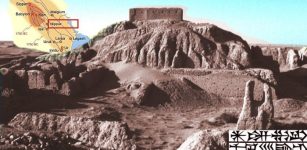 Nippur – Holy City Of God Enlil And One Of The Oldest Cities Of Sumer
Featured Stories | Jul 24, 2023
Nippur – Holy City Of God Enlil And One Of The Oldest Cities Of Sumer
Featured Stories | Jul 24, 2023 -
 Runes: Facts And History About Odin’s Secret Language
Ancient History Facts | Jan 27, 2016
Runes: Facts And History About Odin’s Secret Language
Ancient History Facts | Jan 27, 2016 -
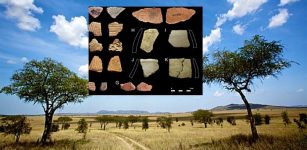 Evidence For Milk, Meat, And Plants In Prehistoric Kenya And Tanzania
Archaeology | Apr 15, 2020
Evidence For Milk, Meat, And Plants In Prehistoric Kenya And Tanzania
Archaeology | Apr 15, 2020 -
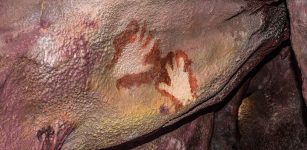 Neanderthals: The Oldest Art In The World Wasn’t Made By Humans
Featured Stories | Jan 17, 2023
Neanderthals: The Oldest Art In The World Wasn’t Made By Humans
Featured Stories | Jan 17, 2023

